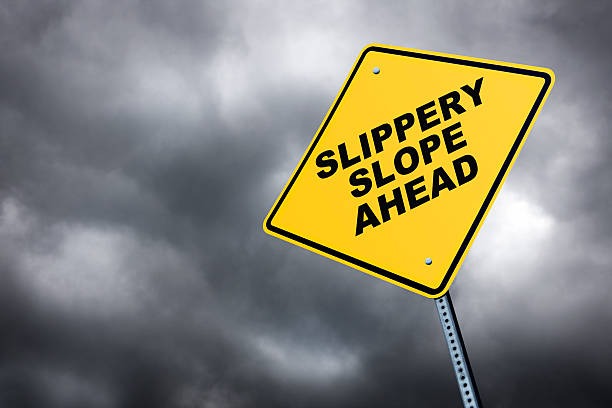The Slippery Slope of Substance Abuse: When One Bad Habit Can Lead to Addiction
For many, substance abuse isn’t an overnight transformation into addiction—it’s a gradual slide down a slippery slope. What begins as occasional use can turn into something far more dangerous, often leading to stronger, more harmful substances that take hold before a person even realizes what’s happening. Understanding this progression is critical—because the best way to avoid addiction is to stop the cycle before it starts.
ARTICLE
by Joseph Schiele, PhD


The Slippery Slope of Substance Abuse: When One Bad Habit Can Lead to Addiction by Joseph Schiele, PhD
Introduction: When One Drink Becomes One Too Many
It often starts innocently. A casual drink at a party. A hit of marijuana to relax after a long day. A few painkillers after surgery. It doesn’t seem like a big deal - until it is.
For many, substance abuse isn’t an overnight transformation into addiction - it’s a gradual slide down a slippery slope. What begins as occasional use can turn into something far more dangerous, often leading to stronger, more harmful substances that take hold before a person even realizes what’s happening.
Understanding this progression is critical - because the best way to avoid addiction is to stop the cycle before it starts.
The Slippery Slope: How Small Habits Lead to Bigger Problems
Addiction doesn’t typically begin with hard drugs like heroin or fentanyl. It starts with something small, something that feels normal, something that doesn’t seem like a threat.
Here’s how the progression often works:
1. Alcohol: The Socially Accepted Gateway
Alcohol is widely accepted and easy to access.
Many use it to relax, fit in, or escape stress.
Over time, some develop tolerance (needing more to feel the same effect).
As tolerance builds, drinking more frequently or heavily becomes the norm.
Judgment becomes impaired, making people more likely to try other substances.
2. Marijuana: The Next Step
Many see marijuana as "harmless" or "natural."
While it may feel relaxing, it impacts motivation, memory, and decision-making.
Regular use can lead to dependence - where a person feels they need it to function.
As the high becomes less satisfying, some experiment with stronger drugs to achieve a bigger escape.
3. Prescription Pills: The Illusion of Safety
Many people first encounter opioids, benzodiazepines, or stimulants through prescriptions.
Painkillers like OxyContin or Percocet provide powerful relief - but are highly addictive.
Benzos (like Xanax or Valium) are prescribed for anxiety but can quickly lead to dependency.
When the prescription runs out, some turn to street drugs like heroin or fentanyl to avoid withdrawal.
4. Cocaine, Meth, and Harder Substances: The Breaking Point
By this stage, substance use is more than just a habit - it’s a need.
Cocaine, meth, and heroin offer an intense high but come with extreme consequences.
These drugs alter the brain’s reward system, making it almost impossible to feel pleasure naturally.
At this point, many lose control, unable to stop even when their life is falling apart.
What started as a drink, a joint, or a pill has now become an uncontrollable spiral.
Why It’s Important to Recognize the Pattern Early
Most people don’t wake up one day and decide to develop an addiction. It happens gradually, often without realizing where the path is leading.
The Warning Signs of a Dangerous Pattern:
Using substances more often than planned. ("Just one drink" turns into five.)
Feeling like you need a substance to relax, sleep, or cope.
Trying something stronger when the usual high isn’t enough.
Justifying use by saying, "At least I’m not doing hard drugs."
Hiding use from friends or family.
If you recognize any of these signs, it’s time to step back and reassess.
How to Stop the Cycle Before It Starts
The best way to prevent addiction is to avoid risky behaviors before they escalate.
1. Make Healthy Choices for Stress Relief
Instead of using substances to unwind:
Exercise regularly - it naturally boosts dopamine.
Try meditation or deep breathing to manage anxiety.
Engage in hobbies that bring joy and relaxation.
2. Avoid Situations That Normalize Substance Use
Surround yourself with friends who don’t pressure you to drink or use drugs.
Be mindful of social settings where substance use is the norm.
3. Educate Yourself and Others
Understand that no drug is truly "harmless" - every substance has an effect on the brain.
If you see a friend slipping into risky habits, speak up and offer support.
4. Seek Help Early
If you struggle with dependency, reach out for professional help before it escalates.
Alcoholics Anonymous or Narcotics Anonymous can provide guidance and accountability.
Conclusion: Choose a Different Path
Addiction is preventable. Most people don’t intend to become addicted - but small, unchecked habits can snowball into something dangerous. Understanding the slippery slope of substance abuse is key to avoiding it.
You don’t need substances to cope, relax, or fit in.
Your life is worth more than a temporary high.
You have the power to walk away before it’s too late.
If you or someone you love is struggling with substance use, there is hope. The sooner you recognize the pattern and take action, the easier it is to turn things around.
💙 Your future is in your hands. Choose wisely. Choose life.
Where to Get Help
If you or a loved one is struggling with substance use, here are some resources:
Alcoholics Anonymous (AA) – www.aa.org
Narcotics Anonymous (NA) – www.na.org
SAMHSA’s National Helpline (U.S.) – 1-800-662-HELP (4357)
SMART Recovery – www.smartrecovery.org
💙 You are stronger than addiction. Get help today.
Support
Empowering survivors through expert resources and stories.
Healing
Hope
Contact Us
© 2025. All rights reserved.